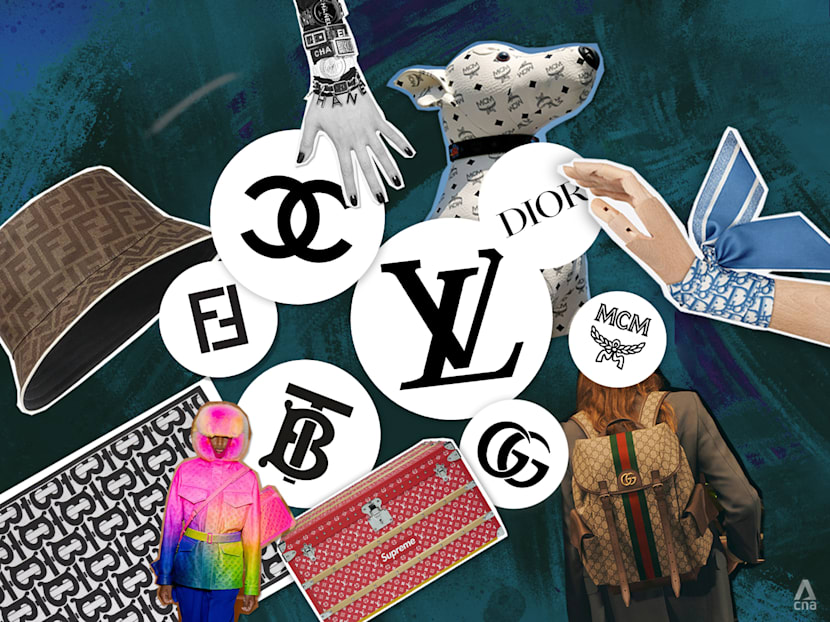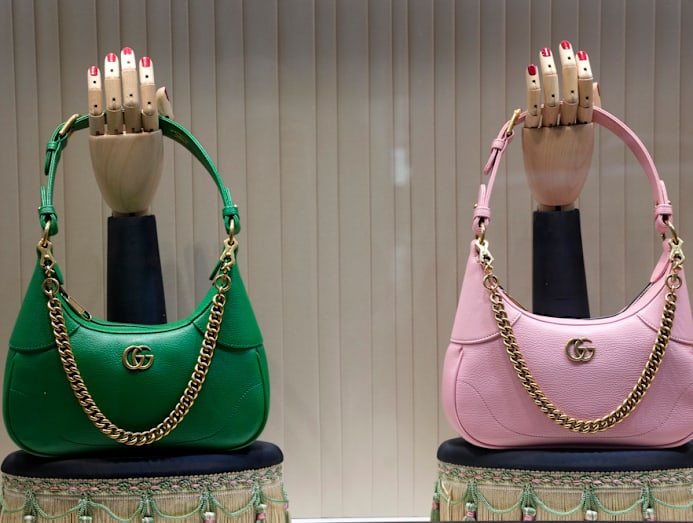Why the world fell out of love with luxury
High-end retail is caught in an identity crisis. Can slighted shoppers be persuaded to start spending again?

(Art: Jasper Loh/CNA)
Nony Odum used to love luxury shopping. An American former fashion executive who once worked for Ralph Lauren and Loro Piana, she would happily splurge on dresses from Balmain and Dolce & Gabbana or Celine coats. Every year, she would buy herself a bag or pair of shoes from Chanel.
Not any more. Like the millions who have fallen out of love with luxury she has stopped spending the way she used to. Odum says she knows why many like her have also pulled back.
“Shopping for luxury used to be fun. Now it’s not,” Odum says in an Instagram Reel from her home in Switzerland, citing bouncers at flagship stores and labels that make you book an appointment to try on shoes.
“Certain brands are also asking $10,000 for a handbag just because they felt like it. Why? Nothing has changed. It’s not better,” she adds. “You can’t insult me like that. You have to make it easy and fun to make a self-respecting purchaser part with her money. It has all got so gross and boring.”

Odum believes that luxury lost touch with reality. This attitude underscores the massive challenges facing the European luxury sector, which has historically grown twice as fast as GDP and is now in its second year of sales decline amid a volatile global economy, slowing demand in China and a loss of its cultural cachet.
Fifty million luxury consumers exited the market between 2022 and 2024, according to a report last year by Bain & Company, many of them aspirational shoppers who felt left behind by skyrocketing prices. HSBC says the average price of luxury goods in Europe rose roughly 52 per cent since 2019, with brands often charging a mark-up of eight to 12 times on the production cost of their goods according to Bernstein estimates.
And despite many brands changing sales strategies to cater to the extremely wealthy, a growing chunk of the one per cent is also disillusioned with what luxury has to offer. With a few exceptions, recent losses have been steep across the board.
“Macro conditions are rough because there are trade tensions and tariffs,” says Erwan Rambourg, global head of HSBC consumer and retail equity research. “But what is making it way worse are self-inflicted mistakes in terms of ‘greedflation’ and a lack of innovation — basically a quite complacent attitude from some brands.”
The question is whether the luxury downturn is cyclical or structural — and which companies can successfully weather it.
Brand strategist Eugene Healey believes that much of the existential threat facing luxury is of its own making, especially at a time where provenance and product quality have come into question for some companies. Luxury brands spend billions on advertising, with a marketing narrative that has long revolved around human craft, process and exclusivity. But brands such as Loro Piana, Dior and Armani have recently come under fire for sweatshop-like conditions in their supply chains. After questions over whether luxury goods were worth their pricetags bubbled on social media, Hermes, Chanel and Louis Vuitton were all subject to viral TikToks earlier this year falsely suggesting their bags were made in China.
The industry has found itself caught in an identity crisis. Increasingly, consumers across the wealth spectrum seem tired of the storytelling around products they no longer believe are worth their astronomical cost.
“Our old status symbols are dead and luxury brands killed them. Luxury ate its own brand narrative about scarcity and it will take a lot to rebuild it,” Healey says on TikTok. Even if items remained in short supply physically, “the internet made things worse by giving us a cultural oversupply of brands. How can something be truly exclusive when you can see a million schmucks posting Birkins or Lambos at the click of a button?”
Another issue is an influx of high-quality knock-offs and mass-market “inspired” pieces that revealed the material difference between genuine goods and imitations can increasingly feel insignificant. What matters is the appearance: whether something looks luxurious and still reflects status, even if it isn’t the real deal. Many consumers now appear unashamed to buy into counterfeit culture, especially those who felt priced out by the market anyway.
“Luxury prices have skyrocketed while the trend cycle has rapidly accelerated,” Alice Sherwood, author of Authenticity: Reclaiming Reality in a Counterfeit Culture told Wired. “People no longer want to spend upwards of [thousands] on the latest ‘it’ bag that might be out of vogue within a year.”
After earnings reports in recent quarters that ranged from disappointing to dire, luxury is trying to strike back. For the likes of Louis Vuitton, which unveiled a line of US$160 lipsticks last month, the answer appears to be business as usual. For others, including the beleaguered Kering group, whose brands include Gucci and Balenciaga, there have been major management reshuffles. A new Kering chief executive, Luca de Meo, who hails from the automotive industry, was hired to replace Francois-Henri Pinault earlier this year and starts later this month.
After Burberry increased prices on leather goods by 60 per cent, chief executive Joshua Schulman, who joined last year, cut prices in categories such as handbags (while keeping them high for products the UK label is best known for, such as trenchcoats). Few are expecting growth like that fuelled by the Chinese market in the first decades of the 21st century.
Other key questions for brands and investors include whether they have now hit a global pricing ceiling (Hermes and Chanel would say no); how to manage extensive store networks in an era of online shopping; and how to respond to major demographic shifts. Data from Bain suggests that online engagement with brands is 40 per cent of what it was in 2022 (albeit back then most of us were at home glued to our phones during the pandemic).
Perhaps the biggest bet of all is on the raft of designers that have been shuffled between houses by executives who hope they can reboot heritage brands for a new generation. At the ready-to-wear shows that start this month, the biggest womenswear debuts will come from Jonathan Anderson at Dior and Matthieu Blazy at Chanel as well as Louise Trotter at Bottega Veneta, Pierpaolo Piccioli at Balenciaga and Jack McCollough and Lazaro Hernandez at Loewe. There is genuine excitement in the industry and beyond for a new creative chapter. Still, the stakes feel incredibly — dangerously — high.
“Fashion has turned these shifts into its favourite gladiator sport — part coronation, part execution — with social media as the Colosseum and the crowd baying for blood,” says the stylist Katie Grand on Instagram. “The spectacle is addictive, yes, but also brutal.”
There are also plenty no longer interested in watching. Healey believes that after eras where social status and cool were first defined by ownership of luxury products and then health and beauty, we have entered an oversaturated image culture where new status symbols “can’t just be things that are compressed into the visual realm, they have got to be behavioural”. These include “privacy, leisure time, enriching and meaningful experiences, and lots of children”, as well as being offline.
Despite the slump, people are still shopping. Some have turned to more accessibly priced premium brands, such as Ralph Lauren and Coach, vintage trawling or smaller independent brands that don’t break the bank, such as Me+Em, Rixo and Polene. For Odum, who runs In Vibrant Company, a platform that provides virtual mentorship, career and lifestyle guidance to women, there is a large cohort of customers who are focusing their spending on other areas.
“There is so much competition for her attention and funds: travel, hair, beauty, home decor,” says Odum, who adds that lots of people “have dialled back and are just saving and investing” or putting their children through school. She has received dozens of comments online from women who say they feel the same way as her about luxury fashion and have sold many of their pieces.
“I want to love what I buy and wear it to death. If it’s not like that, then I am not buying,” Odum says.
Elizabeth Paton © 2025 The Financial Times.
This article originally appeared in The Financial Times.







